How to Customize AR-15s
This article has been updated in September 2023 from its original publishing date.
What is an AR-15?
The American company ArmaLite invented both the AR-10 and the even more popular AR-15 rifle. Both these rifles get their AR prefix from ArmaLite Rifle (not “Assault Rifle”). The AR-10 is now over 60 years old and was originally developed in the 1950s as a 7.62x51mm basic infantry rifle. It included features from older designs, a lightweight chassis, and a new gas system. ArmaLite designed the AR-15 in the late 1950s as a lightweight AR-10-type gun chambered in 5.56×45mm NATO ammo. ArmaLite had financial problems and sold the rights to Colt, who made some changes and started mass-producing it and selling it.
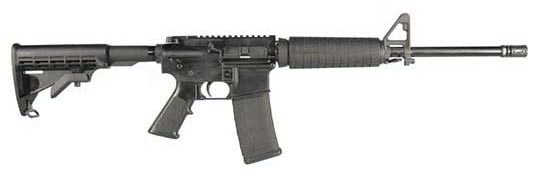
The original military model of this platform is not an AR-15, it is the M16. The first model used by the US military was the M16A1, capable of 3-round burst fire and fully automatic fire. The military later switched to the M16A2, which eliminated the fully-automatic feature in an effort to save on training and ammunition. The M16A2 is only capable of semi-automatic or 3-round burst fire.
The AR-15 is a semi-automatic rifle. Pull the trigger once and it only fires once. The trigger must be released and squeezed for every shot fired. They are not select-fire rifles, meaning they are not capable of burst-fire or fully-automatic fire. Companies other than Colt started making after-market accessories such as different pistol grips, handguards, scopes, buttstocks, and more that could integrate with the AR. And many of those companies found they could make entire AR-15s.
Today, there is a huge selection of AR platform rifles, pistols, shotguns, and SBRs (Short-Barreled Rifles) on the market from a wide variety of brands. Once you have a lower receiver, which holds the trigger assembly and has a magazine well, you can buy all of the parts to create and customize your own personalized AR rifle or pistol. The lower receiver also determines the calibers you can choose from, since a 5.56mm NATO lower can’t accommodate 7.62mm NATO/308 Win. ammo. However, an AR-15 lower marked “multi-cal.” is very versatile and preferred by owners who want a lot of options.
While the standard AR-15 is used with 5.56×45mm NATO/.223 Remington ammo, many AR-type guns are offered in .22 LR all the way up to much more powerful hunting calibers. With the AR, you can swap out the upper receiver and barrel to work with different calibers in no time.
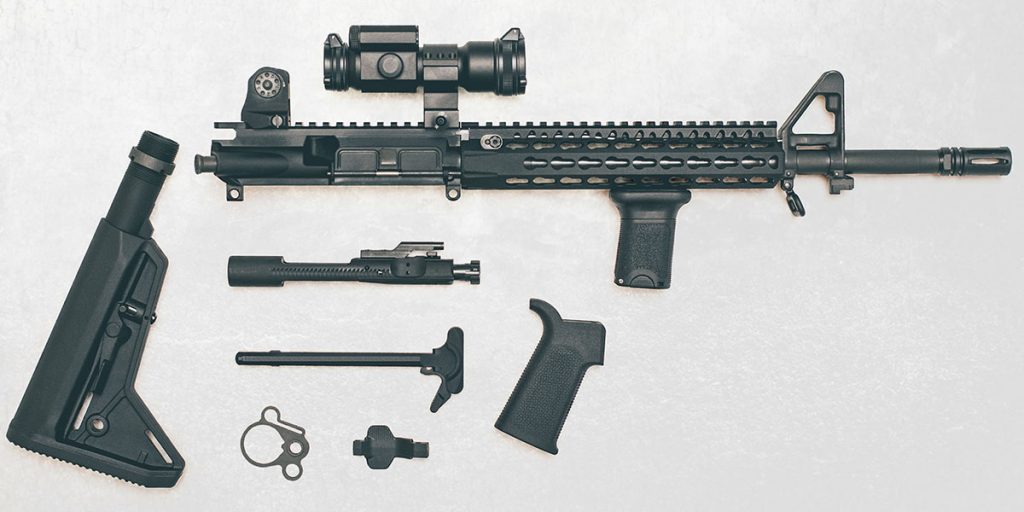
Can I customize my AR-15?
An AR-15 is like a car that you can upgrade/customize by putting in seats, engines, wheels, and more from virtually any provider. The reality is that unless you’re a specialist like a car mechanic or serious hobbyist, you probably won’t be able to customize your car more than tinting your windows or putting in different color floor mats. A mechanic might put on custom wheels, etc. Chances are you won’t be able to mount your own car seats. But what if you could? Not only that, what if the seats you could put in one car would fit in any car? AR-15s are a bit like that. AR-15s are extraordinarily modular high-capacity gas-operated semi-automatic guns. You can take various components that fit one AR-15 and fit them to just about any other AR-15. The AR platform can host calibers as small as 22 LR and as large as 12-gauge shotshells.
Due to this ingenious customizability, ARs are rightfully declared an engineering marvel. You can buy one that’s fully built, of course, or you can assemble one yourself from the components you choose. Customization is easily done by a gun owner without requiring going to and paying for a gunsmith to do the work. Depending on what you are doing, you might need no tools or, worst case, some very simple ones.
AR-15s are so popular with sport shooters and gunmakers that it seems harder to find a gun manufacturer that doesn’t make one than one that does. Ironically, however, Colt has gotten out of the AR-15 game and there is a seeming glut of these guns now. But Colt still retains the right to the name.
Lower Receivers & Upper Receivers
The heart of an AR-15 is its lower receiver. The lower receiver is the gun’s core and most everything attaches to it. To facilitate maintenance, upgrades, etc., the AR’s receiver is actually split into two parts, called, logically enough, the Upper Receiver and Lower Receiver. The two parts are joined by two pins. Better-quality ones tend to have less wobble than lower-quality ones. One of the first modifications people make is using drop-in lower parts kits for a crisper trigger.
Both upper and lower receivers are typically forged from 7075-T6 aluminum. 7075-T6 is an aluminum-zinc alloy developed by Japan for the Imperial Japanese Navy’s World War II aircraft. The upper and lower receiver are normally matte black. But many companies provide theirs in all kinds of colors. Field Dark Earth (FDE) is probably the most common. But you’ll see all kinds of colors including white, pink, blue, etc. Many of the guns have camouflage finishes and some have rather decorative finishes like American flag motifs that often extend across the handguard and other parts too. Between Cerakote and engravings, you can truly have a one-of-a-kind AR-15.
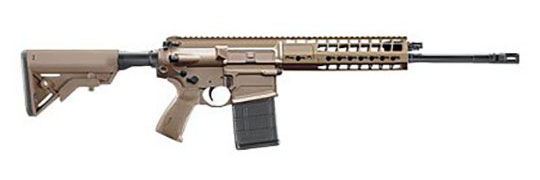
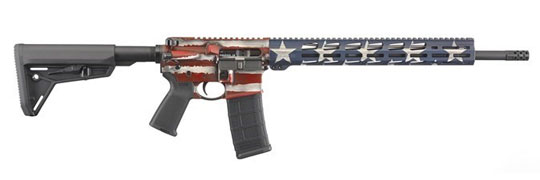
The upper receiver consists of the caliber-specific barrel, bolt carrier group (BCG), and buffer tube. This enables a fast swap from one caliber to another that can easily be done in the field. The upper receiver has several standard connections that permit attaching compatible sights, barrels, handguards, pistol grips, lights, and more. So you can buy the gun one way and then change any combination of parts as your budget and desires carry you.
AR-15 Barrels
You have many choices of barrel lengths. The typical length is a 16” carbine barrel, but you can get both longer and shorter. Longer barrels make the gun heavier and more difficult to wield but offer more acceleration, higher exit velocities, and increased accuracy.
Some barrels are threaded. These come with either a threaded cap, muzzle brake, or flash hider that mitigate recoil forces, muzzle flip, and flash visibility respectively. The A2-type birdcage muzzle brake is a very common one. Muzzle brakes typically have one, two, or three chambers.
As with muzzle brakes in artillery or tank guns, the chambers vent propellant exhaust gases to the sides and often up via vent ports as well. Upward venting provides a downward thrust that helps relay the gun for faster cycling. Guns usually don’t have porting on the bottom since that might kick up dust when used in a prone position.
Many ARs have a ported M-LOK matte black handguard. The ARs usually sport a long integral Picatinny rail (MIL-STD-1913) for mounting scopes, etc. that crests the receiver and sometimes part of the handguard too.
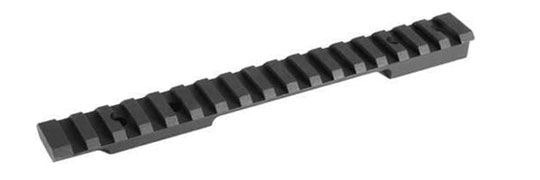
AR-15s are semi-automatic rifles. As mentioned before, pull an AR-15’s trigger once; it fires once. But how? Simple. The system uses exhaust gases to move several parts to put the next round in place. There are two ways to do this: direct impingement or piston. Let’s briefly cover each.
With direct impingement, an AR-15’s gas system takes some of the gas that propels the bullet through the barrel and vents it through a hole (gas port) in the top (near the middle) of the barrel. The exhaust goes up the hole, into the gas block,- and then into the gas tube that blows back into the upper receiver. The bolt carrier group (BCG) normally blocks the ammunition that’s in the magazine below. But the gas rams back (impinges) the bolt carrier group far enough to allow the next round of ammunition to spring up from the magazine into the chamber.The first AR-15s were direct impingement. Even now most still are. However, now some AR-15s use more expensive and heavier but cleaner operating pistons. To oversimplify a bit, the piston essentially takes the place of the gas tube in the direct impingement system. Pistons also benefit by being more weatherproof. But their function is the same: to use exhaust gases to chamber the next round.
AR-15 pistol grips are usually black textured polymer. But they can also vary. For instance, the Magpul MOE grip has a beavertail backstrap for improved comfort and handling. It’s also hollow permitting storage through its bottom cap.
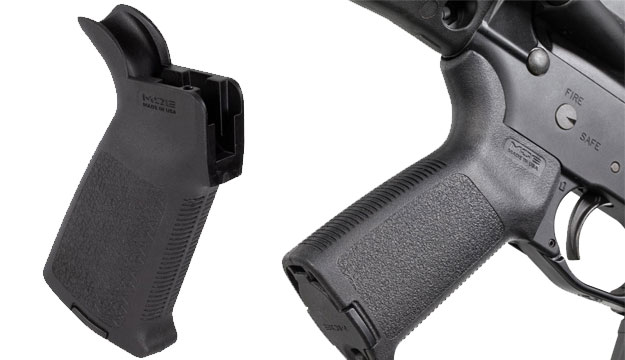
You can configure your AR-15 to have a simple inexpensive fixed stock all the way up to a more expensive 6-position adjustable stock where you can optimize length of pull to exactly what you want. The stock holds the buffer tube.
AR-15s can use 5-round magazines all the way up to 30-round magazines and various capacities in between.
These are just some of the different aspects of AR-15s that can help you decide how to customize AR-15s. But there is plenty more such as varieties of sights, barrel lining, types of alloys, types of handguards, types of finish, stocks, grips, and more we plan to cover in other articles.
Related Articles:
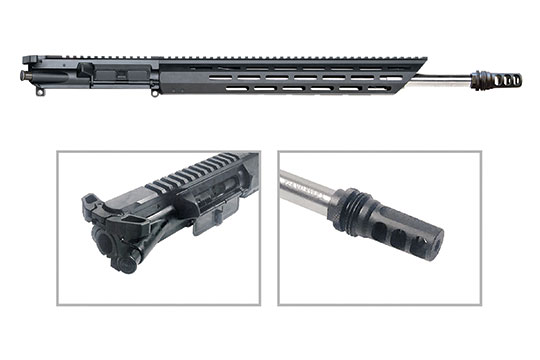
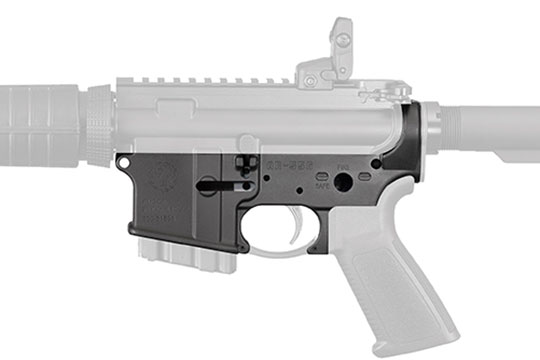


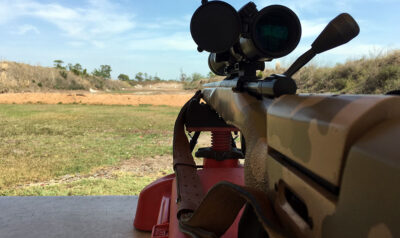
![SIG SAUER CROSS SAWTOOTH Rifle – Now Chambered in 6.5 PRC [Video]](https://qacontent.gunbroker.com/wp-content/uploads/2025/08/Sig-Sauer-Cross-SAWTOOTH-6.5-PRC-Rifle-22-Proof-Carbon-Fiber-Barrel-Featured_1200x800-400x267.jpg)
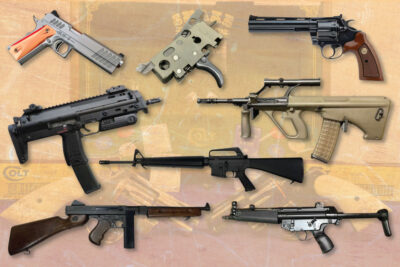
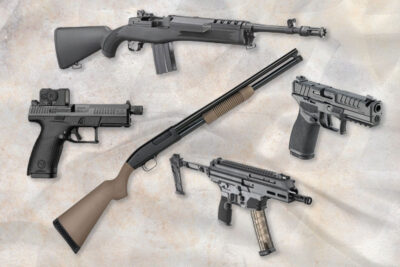

![Luth-AR New Products for 2025: 10-22 Bull Barrel & More! [Video]](https://qacontent.gunbroker.com/wp-content/uploads/2025/02/LUTH_AR_Retro_M16_handguards-2-400x267.jpg)
![Features of Smith & Wesson Model 1854 Stealth Hunter – A Lever Action in Multiple Calibers [Video]](https://qacontent.gunbroker.com/wp-content/uploads/2025/02/Smith-Wesson-Model-1854-Stealth-Hunter_lever-action-400x267.jpg)
![New Desert Tech Quattro-15 Rifle & Quattro-15 Pistol in 5.56NATO/223Rem [Video]](https://qacontent.gunbroker.com/wp-content/uploads/2025/02/DesertTech_quattro-15_pistol-new-for-2025-400x267.jpg)
![The New Upgraded Global Ordnance Monolith 5.56 Rifle [Video]](https://qacontent.gunbroker.com/wp-content/uploads/2025/02/Global-Ordnance-Monolith-556-400x267.jpg)
![Upgraded Desert Tech WLVRN: Lighter & More Accurate, Plus a New Sabertooth Handguard [Video]](https://qacontent.gunbroker.com/wp-content/uploads/2025/02/DesertTech_WVLRN-GunBroker_SHOT25-400x267.jpg)